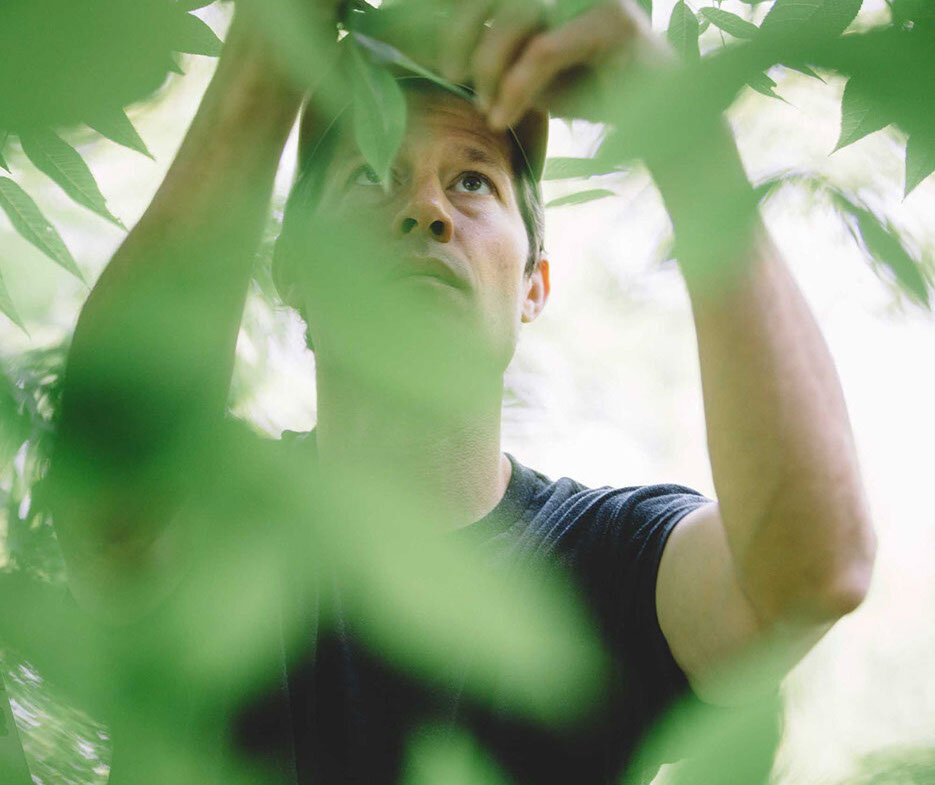How It's Made: Watershed Nocino
An inside look at how Watershed’s most unique seasonal spirit is made
Unripened Black Walnuts, perfect for Nocino
Join us on Saturday, December 3, 2022, for NocinoFest! Spend the afternoon with your family enjoying complimentary bites, sample our complete line of spirits, and shop for everyone on your holiday list in our local vendor market.
Nocino, a spiced black walnut liquor, is bottled after the mixture of walnuts, spices, citrus, sugar and vodka spends about a year macerating, when the mixture becomes inky black and sweet. So, it came as a bit of a surprise when, standing in the shade of mature nut grove, Joe Cullman sliced open an unripe, vibrant green walnut, so young the interior shell had not yet formed, and told us it was ready.
There are some great stories behind Nocino, but the Cullman Family Tree Farm is where most of them begin.
Joe (right) and Donald (left) Cullman. Black Walnut aficionados and just overall kind people.
The farm, located in Marysville, contains over 60 acres of planted trees, mostly fruit and nuts, some gently rolling hills, a pond that stretches out at the crest of the land, wetlands, and a log cabin that Joe’s dad, Donald, built when he formed the farm in the 1970s. Joe’s been at the helm for the last five years with his wife, Donna, and two mastiffs who, from a not-so-great distance, look like horses, but are very sweet.
Donald Cullman examines the year’s Black Walnut crop
Green walnuts, freshly picked and ready for processing
The Cullmans grow hickory and walnut trees, along with hican (a cross between hickory and pecan), hazelnuts, buartnuts, and Japanese heart nuts. But the black walnut tree is the most prominent, and tall too, some growing to over 40 feet high. They bear wide green leaves in the summer and, come spring, fuzzy light green walnuts.
When we visited in early July, the walnuts are technically unripe. But that’s when Joe takes to the trees, months before he’ll harvest nuts for his other customers, tossing green walnuts to the ground below where they’ll be collected with a “Nut Wizard” (re: a Roomba for walnuts). From there, the nuts are weighed, cleaned and sorted. Eventually, they’ll make their way to the distillery in mesh bags, where our teams begins the process of chopping the walnuts, one pound at a time.
In the fall, when the rest of nuts have ripened, Joe will harvest every other day. By then, the remaining black walnuts will have reached maturity inside their shells. They’ll find their way to roasted and cracked, baked into desserts or eaten out of hand.
Meanwhile, Nocino rests, alcohol and spices and citrus working their magic on the bitter walnuts, a beautiful and patient process settling in for the winter. But a year of aging pales in comparison to the 20 or 30 that Joe and Don have waited for some of their trees to mature, and to produce nuts. Some produce for a year or two, then take one off. Others are more fickle.
We ended our trip standing around the Cullman’s kitchen counter, where Donna cracks open an array of nuts for us to try. We were humbled to taste the fruit of generations of labor and love, and we all make note of our favorites.
For the record, the Mastiffs prefer hicans. Joe says they crunch them shells and all.








